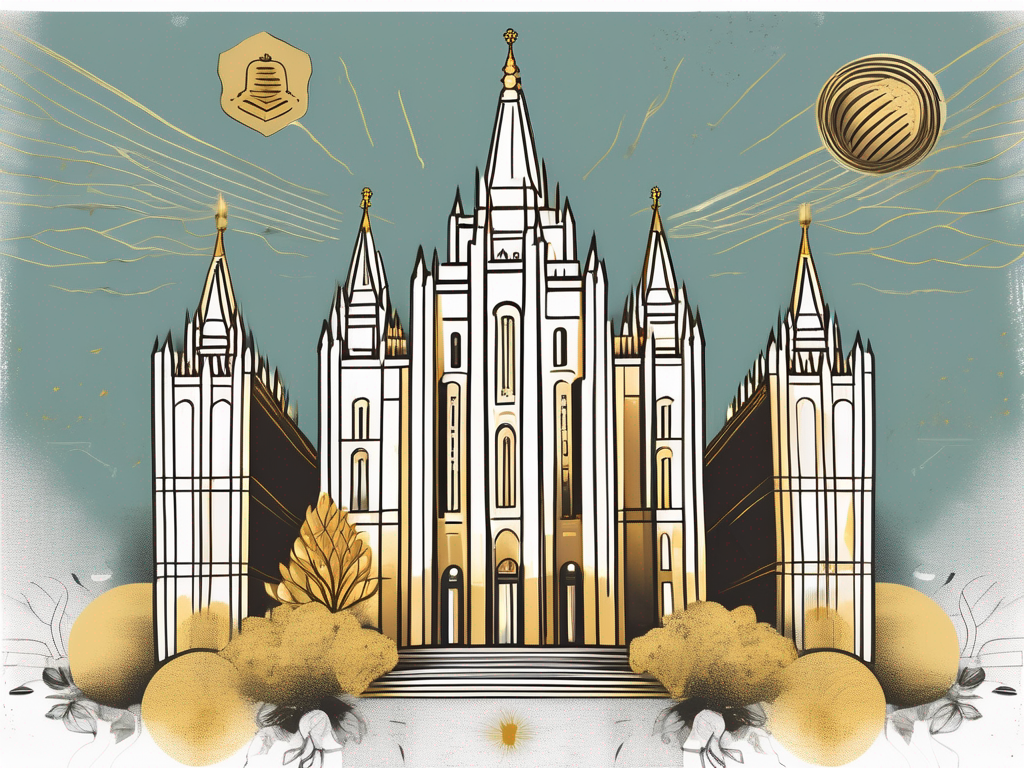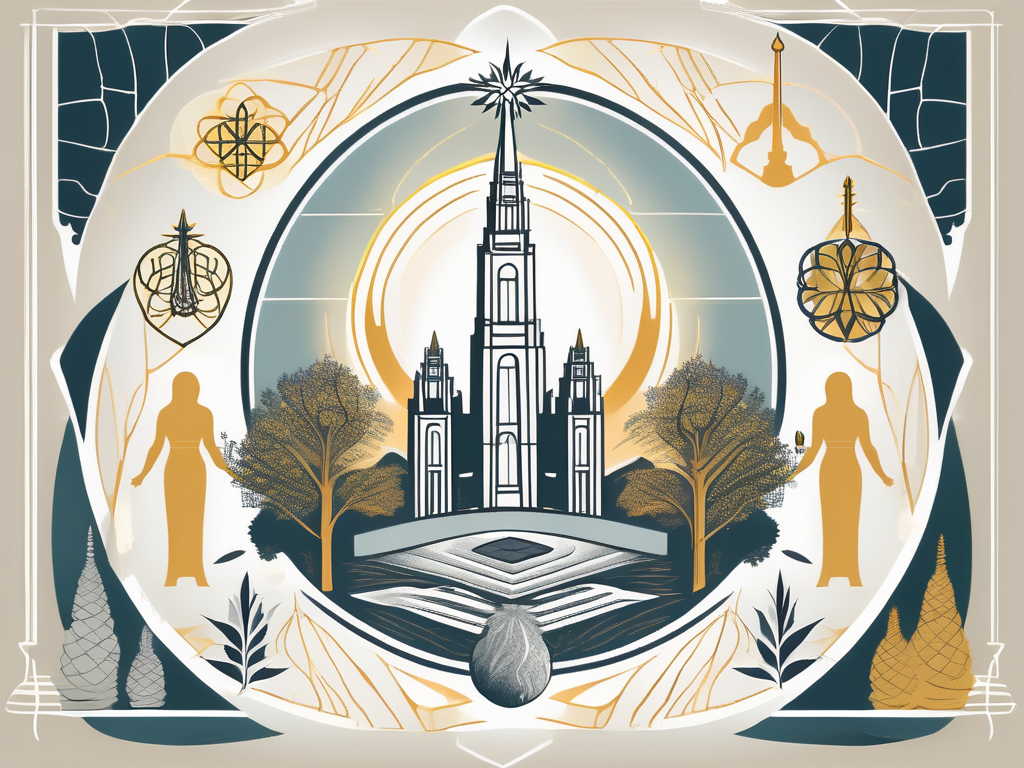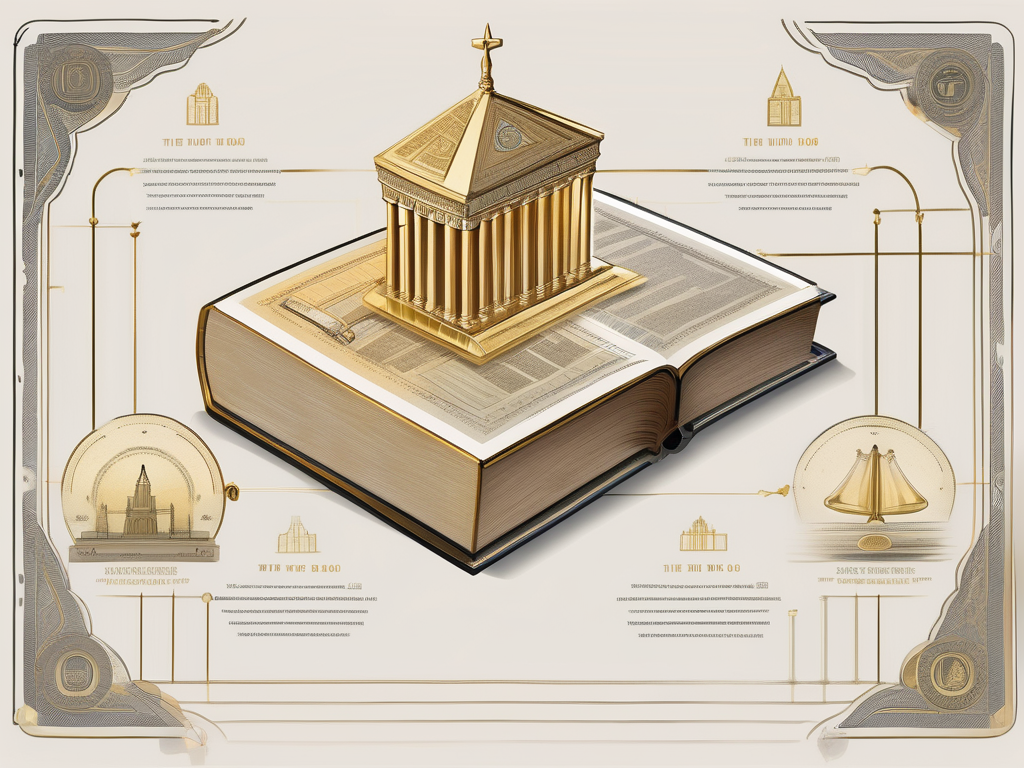In this article, we will delve into the fascinating world of religious beliefs and practices by comparing two prominent faiths – Lutheranism and Mormonism. By understanding the basics of these religions, exploring their historical roots, examining their core beliefs and doctrines, and diving into their practices and rituals, we hope to gain a deeper appreciation for the similarities and differences between these two faiths. So, let’s begin our comparative journey!
Understanding the Basics: Lutheran and Mormon Faiths
To truly grasp the essence of Lutheranism and Mormonism, it’s crucial to comprehend their origin and historical background. Let’s start with Lutheranism.
Lutheranism traces its roots back to the 16th century when Martin Luther, a German theologian, initiated the Protestant Reformation in Europe. Luther’s teachings challenged certain practices of the Catholic Church, eventually leading to the establishment of a new Christian denomination – Lutheranism.
During this time, Europe was undergoing significant religious and political changes. The Catholic Church held immense power and authority, but it was also marred by corruption and abuses. Martin Luther, a devout Catholic monk, became disillusioned with the Church’s teachings and practices, particularly the sale of indulgences. He believed that salvation should be based on faith alone, rather than through the purchase of indulgences or the performance of good works.
In 1517, Luther famously nailed his Ninety-Five Theses to the door of the Castle Church in Wittenberg, Germany. This act of protest against the Church’s practices sparked a theological debate that spread throughout Europe. Luther’s ideas gained traction among the common people, who were seeking a more personal and direct relationship with God.
As Luther’s teachings spread, a distinct religious movement began to take shape. Lutheranism emphasized the authority of the Bible and the priesthood of all believers. It rejected certain Catholic doctrines such as purgatory, the veneration of saints, and the authority of the Pope. Lutherans believed in the concept of “sola scriptura,” which means that the Bible alone is the ultimate authority in matters of faith and practice.
The spread of Lutheranism was not without challenges. The Catholic Church, threatened by the growing influence of this new movement, sought to suppress it. However, Lutheranism found support among various rulers and nobles who saw it as an opportunity to challenge the Church’s authority and gain more control over their territories.
Now, let’s turn our focus to Mormonism.
Mormonism, officially known as The Church of Jesus Christ of Latter-Day Saints, emerged in the early 19th century in the United States. This religious movement was founded by Joseph Smith Jr., who claimed to have received divine revelations and translated the Book of Mormon, which Mormons consider to be an additional testament of Jesus Christ.
Joseph Smith’s early life was marked by spiritual seeking and religious fervor. He grew up in a region known as the “Burned-over District” in upstate New York, which was characterized by intense religious revivals and the emergence of various new religious movements.
In 1820, at the age of 14, Smith claimed to have had a vision of God the Father and Jesus Christ, who instructed him not to join any existing Christian denomination. According to Smith, he was later visited by an angel named Moroni, who revealed the location of ancient golden plates buried in a hillside. Smith claimed to have translated these plates by the power of God and published the resulting text as the Book of Mormon.
The Book of Mormon tells the story of ancient civilizations in the Americas and their interactions with Jesus Christ. It contains teachings and principles that Mormons believe to be essential for salvation. The publication of the Book of Mormon marked the official establishment of the Church of Jesus Christ of Latter-Day Saints in 1830.
Mormonism faced significant opposition and persecution in its early years. The religious beliefs and practices of the Mormons were seen as unconventional and threatening by many. The Church faced legal challenges, mob violence, and eventually, the assassination of Joseph Smith in 1844.
Despite these challenges, Mormonism continued to grow and flourish. Under the leadership of Brigham Young, the Mormons embarked on a westward migration to escape persecution and establish a new religious community in what is now Utah. Today, the Church of Jesus Christ of Latter-Day Saints has millions of members worldwide and is known for its emphasis on family, community, and personal revelation.
Core Beliefs and Doctrines Compared
Now that we’ve laid the groundwork, let’s delve into the core beliefs and doctrines that shape these two faiths.
Lutheran Theological Beliefs
Lutherans emphasize the concept of sola fide, meaning “faith alone.” They believe that salvation is granted by God’s grace through faith in Jesus Christ, and not through personal achievements or good deeds.
Lutherans also hold the Bible as the ultimate authority in matters of faith and practice. They believe in the Holy Trinity and the sacraments of baptism and communion.
Furthermore, Lutherans place great importance on the concept of vocation. They believe that every individual has a unique calling from God, whether it be in their professional life, family life, or community involvement. This belief encourages Lutherans to see their everyday activities as opportunities to serve God and their neighbors.
In addition, Lutherans have a strong emphasis on the priesthood of all believers. They believe that all Christians have direct access to God and can approach Him in prayer without the need for intermediaries. This belief empowers individuals to take an active role in their faith and fosters a sense of personal responsibility in their relationship with God.
Mormon Theological Beliefs
Mormons, on the other hand, have distinctive theological beliefs that set them apart. They believe in continuous revelation, meaning that God communicates with His children through modern-day prophets.
Mormons also embrace the concept of salvation through both faith and works. They believe that while faith in Jesus Christ is essential, individuals must also actively strive to live according to God’s commandments and follow the teachings of their church leaders.
Furthermore, Mormons believe in the eternal progression of individuals. They aspire to become gods themselves in the afterlife, with the potential to create and govern their own worlds. This belief in eternal progression motivates Mormons to constantly seek personal growth and improvement in all aspects of their lives.
In addition, Mormons place a strong emphasis on family and genealogy. They believe in the eternal nature of family relationships and strive to strengthen and preserve these bonds both in this life and in the afterlife. Mormons engage in practices such as temple ordinances and family history research to connect with their ancestors and ensure the continuity of their family relationships throughout eternity.
Moreover, Mormons have a unique understanding of the nature of God. They believe in a Godhead consisting of God the Father, Jesus Christ, and the Holy Ghost, who are separate beings with distinct roles. This belief sets them apart from mainstream Christian denominations that adhere to the doctrine of the Trinity.
Practices and Rituals: A Comparative View
Examining the practices and rituals can shed further light on the differences between these faiths. Let’s delve deeper into the worship and sacraments of Lutherans and Mormons to gain a better understanding of their religious practices.
Lutheran Worship and Sacraments
Lutherans prioritize congregational worship centered around the preaching of the Word and the administration of the sacraments. The sacraments hold a significant place in Lutheran theology, as they are seen as means of grace and spiritual nourishment.
Baptism is one of the sacraments practiced by Lutherans. It is considered a sacred act of initiation into the Christian faith. Through baptism, individuals are cleansed of their original sin and become members of the Church. Lutherans believe that baptism is a powerful symbol of God’s love and forgiveness.
The Eucharist, also known as Holy Communion, is another essential sacrament in Lutheran worship. During the Eucharistic celebration, Lutherans believe that the bread and wine become the body and blood of Christ. This act of receiving the sacrament is seen as a way to commune with God and receive His grace.
Mormon Worship and Sacraments
Mormon worship services revolve around the weekly Sunday worship known as Sacrament Meeting. This service is a time for members of The Church of Jesus Christ of Latter-day Saints to gather and worship together. It includes hymns, prayers, sermons, and the partaking of sacrament bread and water.
The sacrament bread and water hold deep symbolic meaning for Mormons. The bread represents the body of Christ, while the water symbolizes His blood. By partaking of these elements, Mormons remember and renew their covenants with God, expressing their commitment to follow Jesus Christ.
In addition to the weekly Sacrament Meeting, Mormons also participate in temple rituals. These rituals are considered sacred and are performed in temples, which are seen as holy spaces. One of the temple rituals is baptism for the dead, where living members are baptized on behalf of deceased individuals who did not have the opportunity to receive the ordinance in their lifetime.
Another significant temple ritual is the eternal marriage ceremony. Mormons believe in the eternal nature of marriage and view it as a sacred covenant that can be sealed for eternity. Through this ceremony, couples are united not only for this life but also for the eternities to come.
These temple rituals hold great importance for Mormons, as they are believed to be essential for eternal salvation and progression in the afterlife.
By exploring the practices and rituals of Lutherans and Mormons, we can see the unique ways in which these faiths express their devotion and seek spiritual connection. These practices not only shape their worship experiences but also play a significant role in their understanding of God’s grace and their journey towards salvation.
Role of Scripture in Lutheran and Mormon Faiths
Scripture plays a vital role in shaping the religious beliefs and practices of both Lutherans and Mormons. However, while both faiths hold the Bible in high regard, there are some differences in the way they interpret and use scripture.
Lutheran Interpretation of the Bible
Lutherans view the Bible as the inspired word of God and interpret its teachings through the lens of Martin Luther’s theological insights and the rich tradition of Lutheran theology. The Bible is seen as the ultimate authority in matters of faith and practice, and Lutherans believe that it contains everything necessary for salvation.
Within the Lutheran tradition, there is an emphasis on the doctrine of justification by faith alone, which is derived from the writings of the Apostle Paul. This doctrine holds that individuals are justified, or made right with God, through faith in Jesus Christ and not by their own works or merit. Lutherans believe that this teaching is clearly supported by the Bible and is central to their understanding of salvation.
In their interpretation of scripture, Lutherans also recognize the importance of understanding the historical and cultural context in which the biblical texts were written. They believe that this contextual understanding helps to illuminate the intended meaning of the biblical authors and allows for a more accurate interpretation of the text.
Mormon Use of Additional Scriptures
In addition to the Bible, Mormons also consider the Book of Mormon, the Doctrine and Covenants, and the Pearl of Great Price as sacred texts. These additional scriptures provide further guidance and reveal God’s will for His people.
The Book of Mormon is believed by Mormons to be another testament of Jesus Christ and contains the religious history of ancient civilizations in the Americas. It is seen as a companion to the Bible and is considered by Mormons to be an essential part of their scriptural canon.
The Doctrine and Covenants is a collection of revelations, prophecies, and teachings given to Joseph Smith, the founder of Mormonism, and subsequent leaders of the faith. It provides guidance for the organization and governance of the Church of Jesus Christ of Latter-day Saints and addresses various doctrinal and practical matters.
The Pearl of Great Price contains additional revelations and translations by Joseph Smith, including the Book of Abraham, which Mormons believe to be an ancient record written by the biblical patriarch Abraham.
For Mormons, these additional scriptures complement and expand upon the teachings found in the Bible. They are seen as modern-day revelations that provide guidance and instruction for the Church and its members.
Overall, while both Lutherans and Mormons hold scripture in high regard, their respective interpretations and use of scripture reflect the unique theological perspectives and traditions of each faith.
Church Structure and Leadership
The organization and leadership structures of these faiths are also worth exploring.
Leadership Structure in the Lutheran Church
Lutheran churches are typically organized on a congregational or synodical level. The highest decision-making body is often an assembly of clergy and lay representatives.
Leadership roles in the Lutheran Church include pastors, bishops, and synod presidents, who oversee various aspects of church administration, worship, and spiritual guidance.
Leadership Structure in the Mormon Church
The hierarchical structure of The Church of Jesus Christ of Latter-Day Saints is centralized under the leadership of a prophet, who is believed to be a living, modern-day revelation. The prophet is assisted by two counselors and a Quorum of Twelve Apostles.
Mormon congregations, known as wards, are led by local bishops and supported by various auxiliary organizations that cater to different age groups and needs.
Conclusion
Through this comparative analysis, we’ve explored the basics, historical backgrounds, core beliefs, practices, and leadership structures of Lutheranism and Mormonism. While both faiths share Christian roots, their divergent theological perspectives and rituals demonstrate the richness and diversity of religious traditions. By understanding and appreciating the differences, we can foster interfaith dialogue and cultivate a spirit of mutual respect and acceptance in our increasingly interconnected world.
Disclaimer: The purpose of this article is to provide a general overview and should not be considered an exhaustive analysis. It is always recommended to consult specific religious authorities and engage in further research to deepen your understanding of these intricate beliefs and practices.












